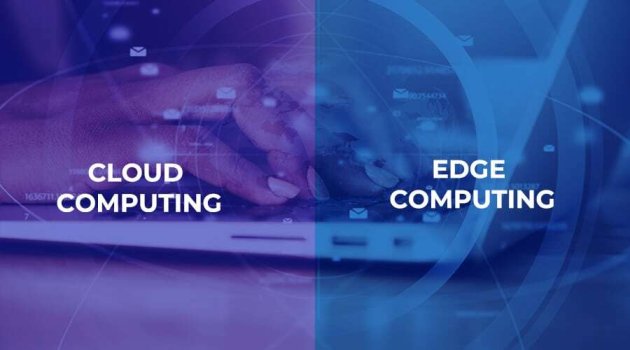K
Kathleen Martin
Guest
The cloud’s primary notion of providing a centralized data source that can be accessed from anywhere in the globe appears to be the polar opposite of edge computing’s local data handling concept. In many respects, though, edge computing was created by the cloud. The big data movement would never have grown to such proportions without centralized data storage. Many internet payment providers, for example, would not exist and companies like Microsoft and Amazon would be very different from what they are now. We’ve spent some time attempting to sift out the benefits of edge and cloud computing. Which is the most effective? The solution isn’t as simple as one would believe.
Cloud computing
Cloud computing refers to the storage, processing, computing, and analysis of large amounts of data on remote servers or data centers. It also refers to “the supply of many Internet-based services, such as data storage, servers, databases, networking, and software.” Because data centers are frequently located in faraway locations, there is a time lag between data gathering and processing, which is usually undetectable in most use cases. In time-sensitive programs, however, this time latency, despite being measured in milliseconds, becomes critical. Consider real-time data collecting for a self-driving automobile, when delays might have disastrous implications.
Advantage of cloud computing
Infrastructure as a service (IaaS), platform as a service (PaaS), and software as a service are the three basic categories of cloud computing (SaaS). High infrastructure availability, self-service provisioning, elasticity, mobility, workload resilience, migration flexibility, broad network access, disaster recovery, and pay-per-use are just a few of the advantages of cloud computing in the form of IaaS.
The back-and-forth movement of data from the point where it is created to the central server for processing and subsequently to the end-user requires a lot of bandwidth, which slows down data processing and transfer. Because emerging technologies and IoT devices require sub-second reaction times, the tendency is to locate data processing and analytics as near to the data source as feasible.
Edge computing
Edge computing, as opposed to cloud computing, brings computation, storage, and networking closer to the data source, lowering travel time and latency dramatically. The procedures take place near the device or at the network’s edge, allowing for speedier reaction times. Edge applications limit the amount of data that has to be moved, as well as the traffic generated by those transfers and the distance that data has to travel.
Continue reading: https://www.analyticsinsight.net/cloud-computing-vs-edge-computing-who-wins-the-race/
Cloud computing
Cloud computing refers to the storage, processing, computing, and analysis of large amounts of data on remote servers or data centers. It also refers to “the supply of many Internet-based services, such as data storage, servers, databases, networking, and software.” Because data centers are frequently located in faraway locations, there is a time lag between data gathering and processing, which is usually undetectable in most use cases. In time-sensitive programs, however, this time latency, despite being measured in milliseconds, becomes critical. Consider real-time data collecting for a self-driving automobile, when delays might have disastrous implications.
Advantage of cloud computing
Infrastructure as a service (IaaS), platform as a service (PaaS), and software as a service are the three basic categories of cloud computing (SaaS). High infrastructure availability, self-service provisioning, elasticity, mobility, workload resilience, migration flexibility, broad network access, disaster recovery, and pay-per-use are just a few of the advantages of cloud computing in the form of IaaS.
The back-and-forth movement of data from the point where it is created to the central server for processing and subsequently to the end-user requires a lot of bandwidth, which slows down data processing and transfer. Because emerging technologies and IoT devices require sub-second reaction times, the tendency is to locate data processing and analytics as near to the data source as feasible.
Edge computing
Edge computing, as opposed to cloud computing, brings computation, storage, and networking closer to the data source, lowering travel time and latency dramatically. The procedures take place near the device or at the network’s edge, allowing for speedier reaction times. Edge applications limit the amount of data that has to be moved, as well as the traffic generated by those transfers and the distance that data has to travel.
Continue reading: https://www.analyticsinsight.net/cloud-computing-vs-edge-computing-who-wins-the-race/

